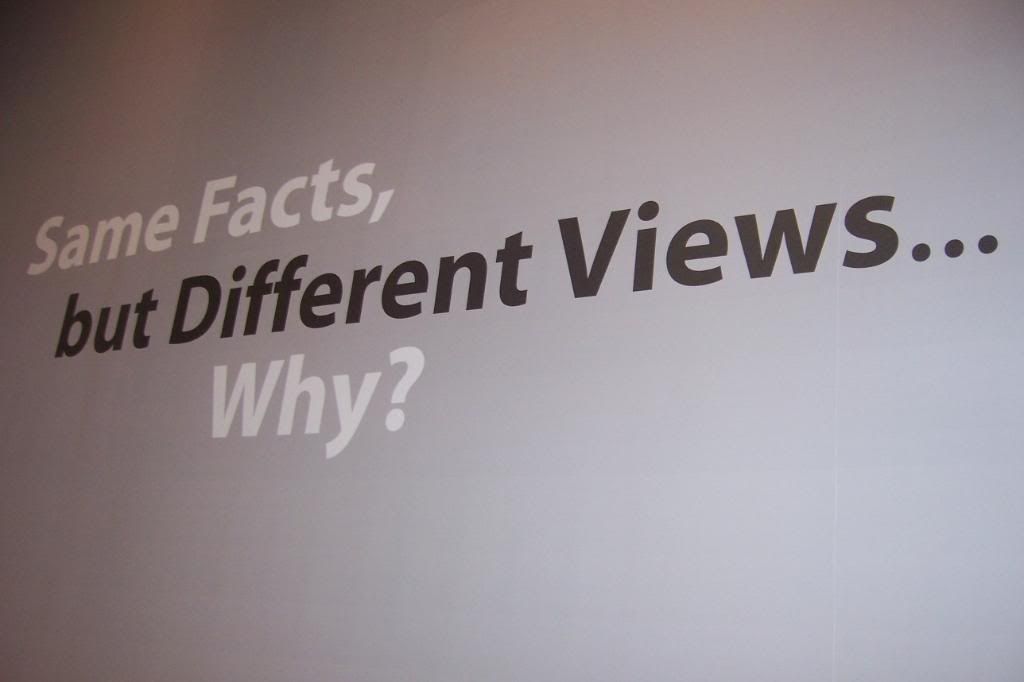
Dinosaurs
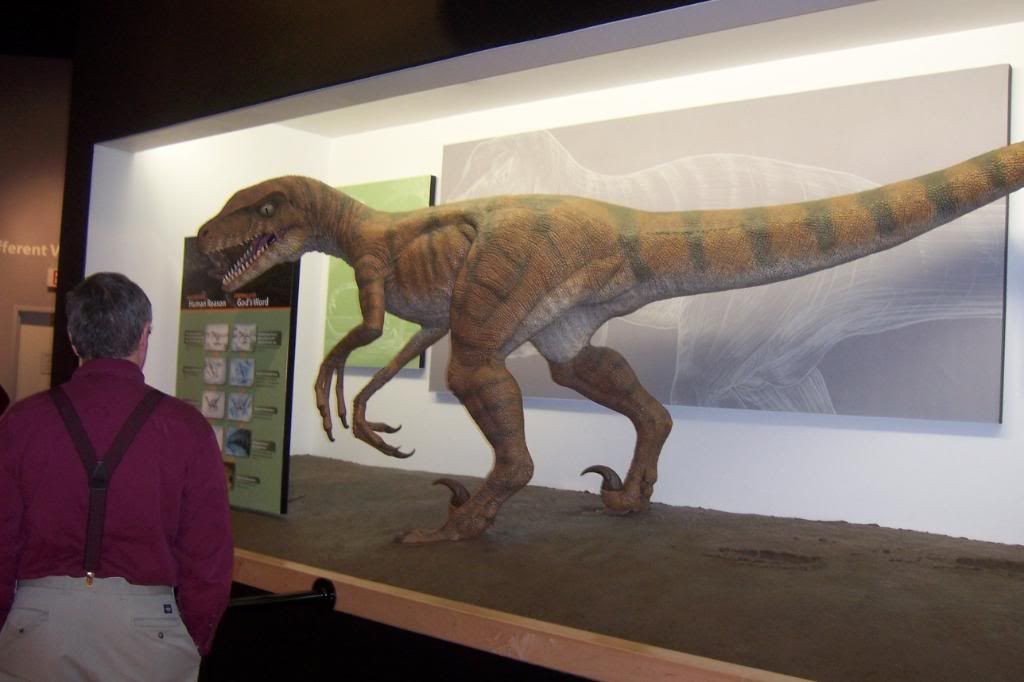
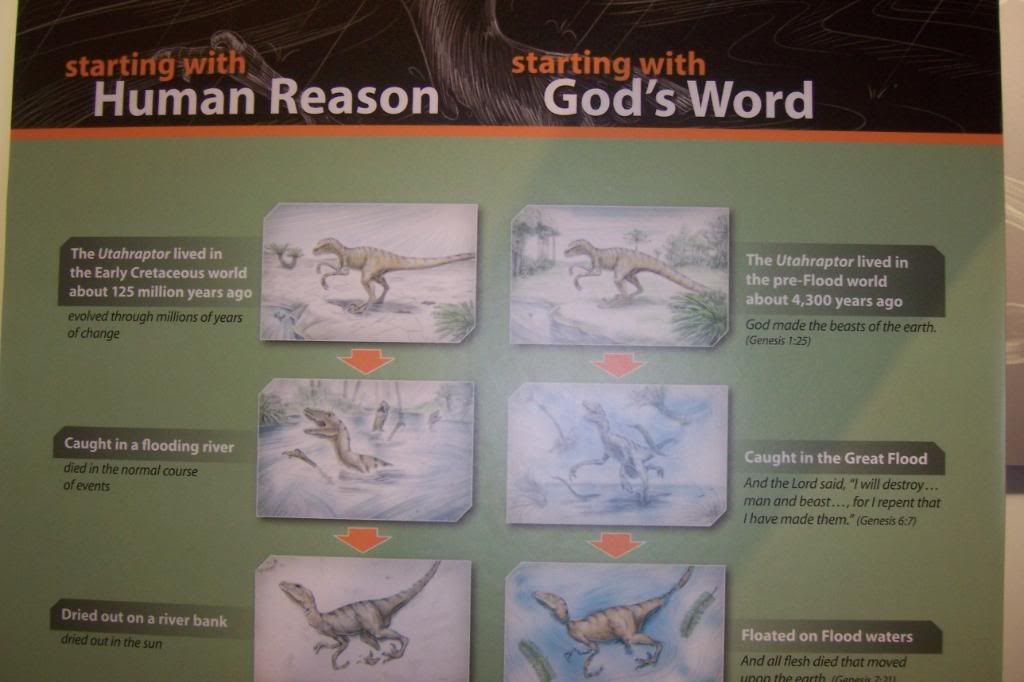
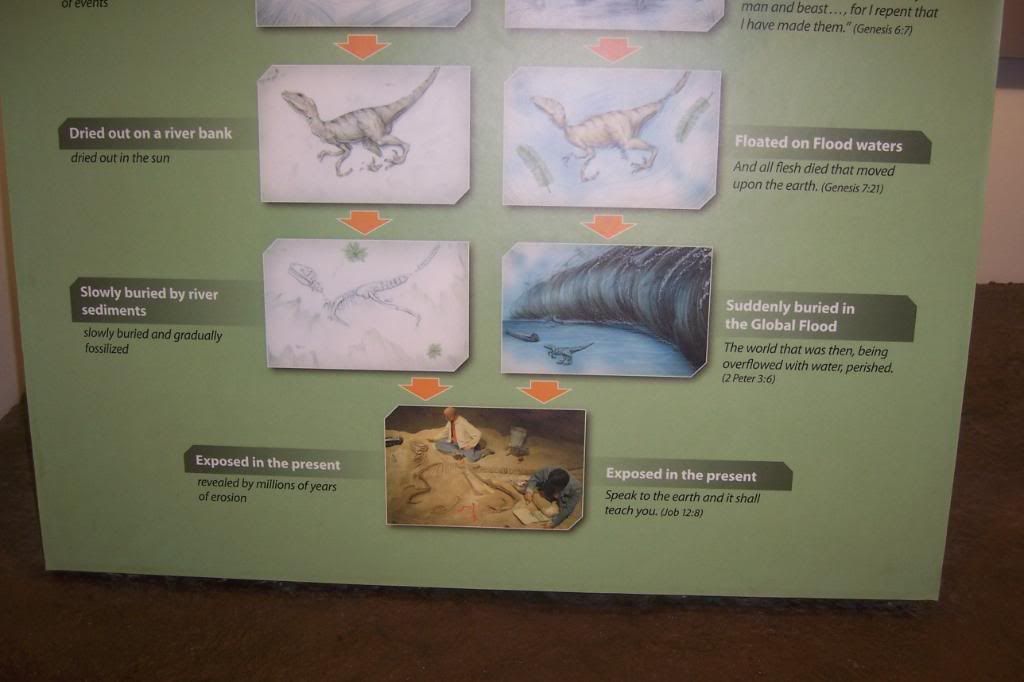
This is what comes first in this section, but the next set of pictures really captures the meaning of these rooms. This is on the right track of how scientists think of fossils, but not quite. This “dried out on a riverbank” idea is off. Most excellent fossilization happens in bog or lake deposits, because there you are more likely to find areas with little or no oxygen, which is a better environment for preservation (especially on the large scale that is shown from this fossil). Also, I have a hard time believing that a giant wave such as the one pictured would not just crush the bones. They also do not give any explanation for how fossilization could happen in such a short period of time.
Different Starting Points
The Crux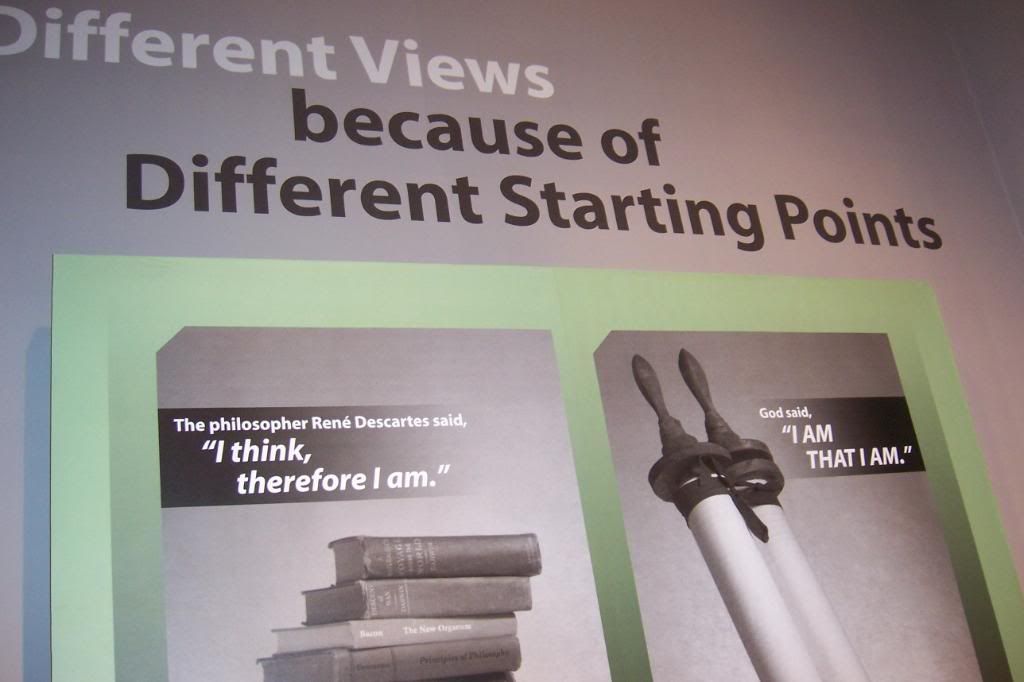
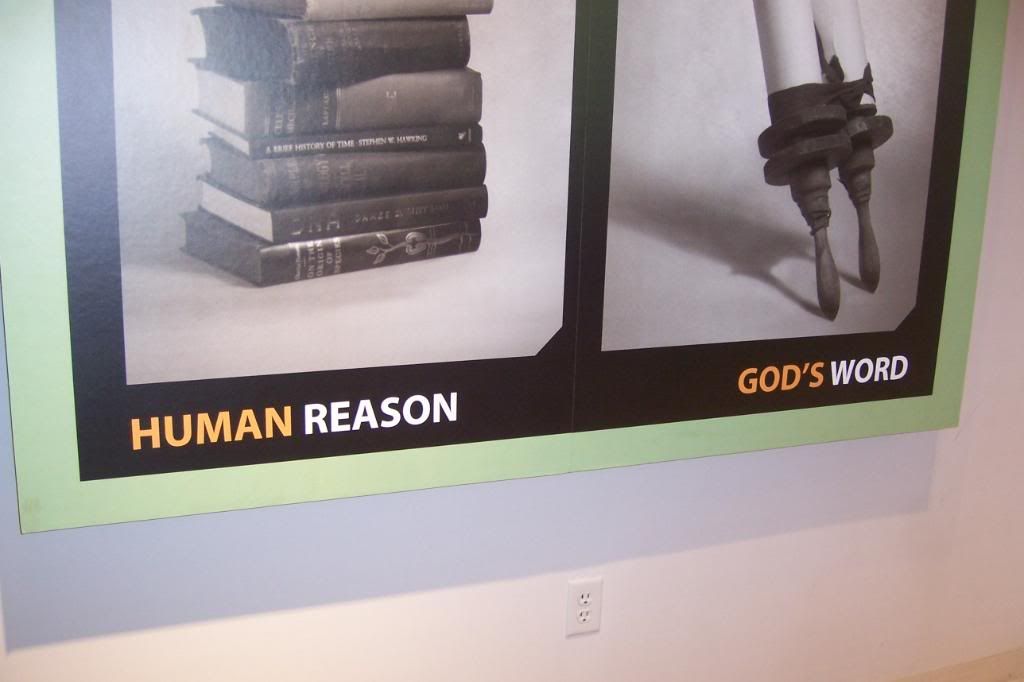
This is the entire crux of the argument from both sides. Of course, scientists do not see Human Reason as a bad thing. “I think, therefore I am”… does this mean that with God’s word we should not think? Is thinking to be outlawed? This photograph also shows that human reason has many, many books behind it, and we can assume this stack represents all of human knowledge. However, the opposing side has just one scroll. They do not need any other information, since all they need is that one piece of literature. Therefore, when any other information is presented to them, they can merely shake it off as “not in the Bible.”
Different Views of the Past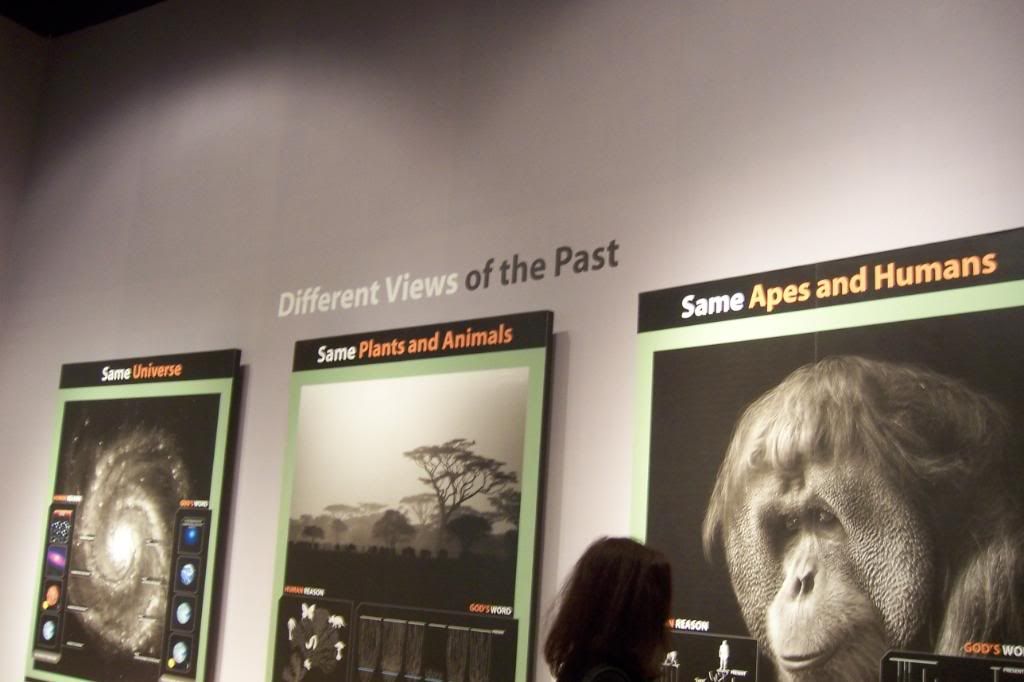
Same Universe
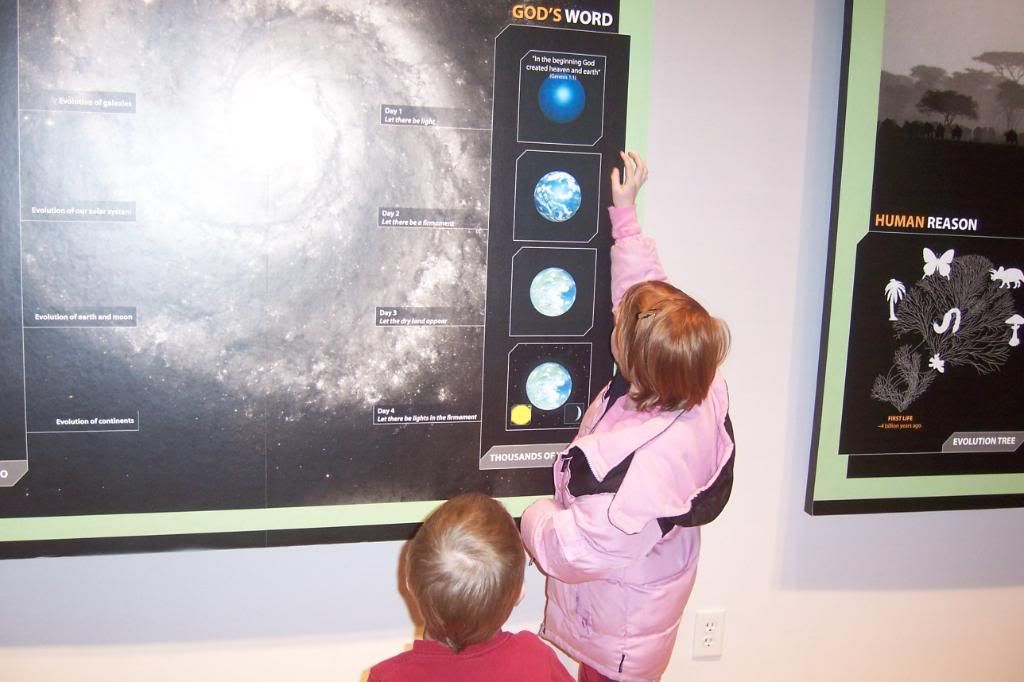
This was probably the most horrifying thing I saw all day. The evolution of the galaxies, solar systems, earth and moon, and continents going against the specific days of creation was not new to me, but these two children were. I would say the older child is 8 or 9, while the younger is 4 or 5. The older sister is thinking that she is doing right by her little brother by explaining to him what he is seeing (especially since he cannot read yet). She was showing him around the museum to help him understand. It hit me then that the indoctrination had probably begun long before this little girl had entered this building, but she had clearly been here before and understood each of the displays enough to explain it to another. This teaching is exactly what we are trying to keep out of our schools. I do not want my children subjected to in a science classroom, and I know many parents, teachers, school board members, and judges who agree with me. However, this museum gives parents another place to go to discuss this with their children. And since the museum was created with these small children in mind, it is a perfect learning environment (considering that some older natural history museums can be boring to children this young).
Same Plants and Animals
Oh, the chaos that is the humanly reasoned evolution bush. This was
Same Apes and Humans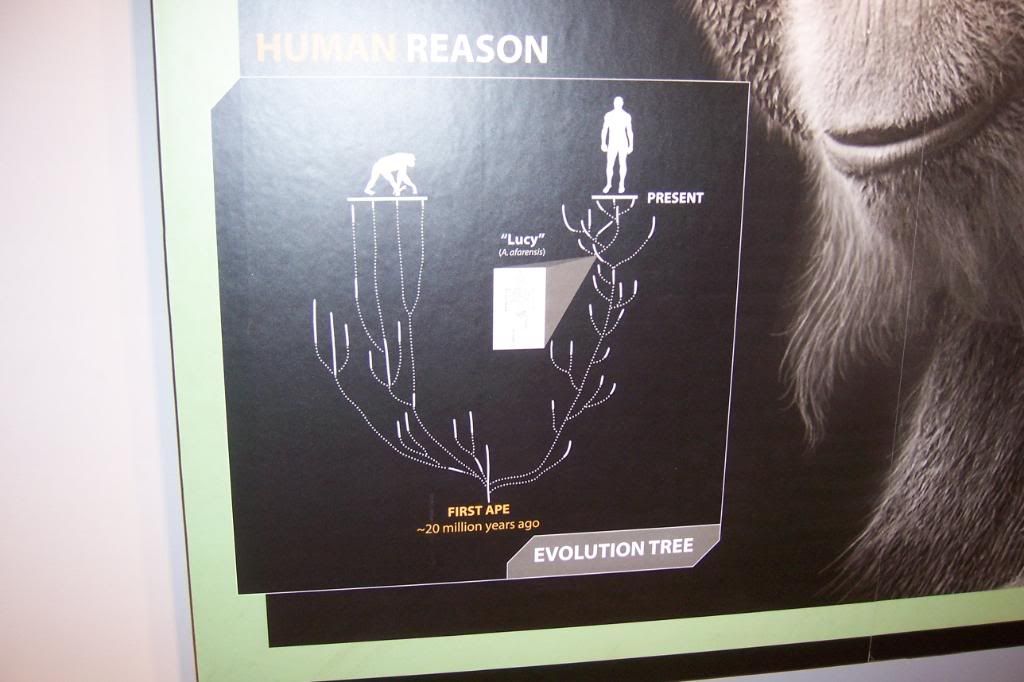
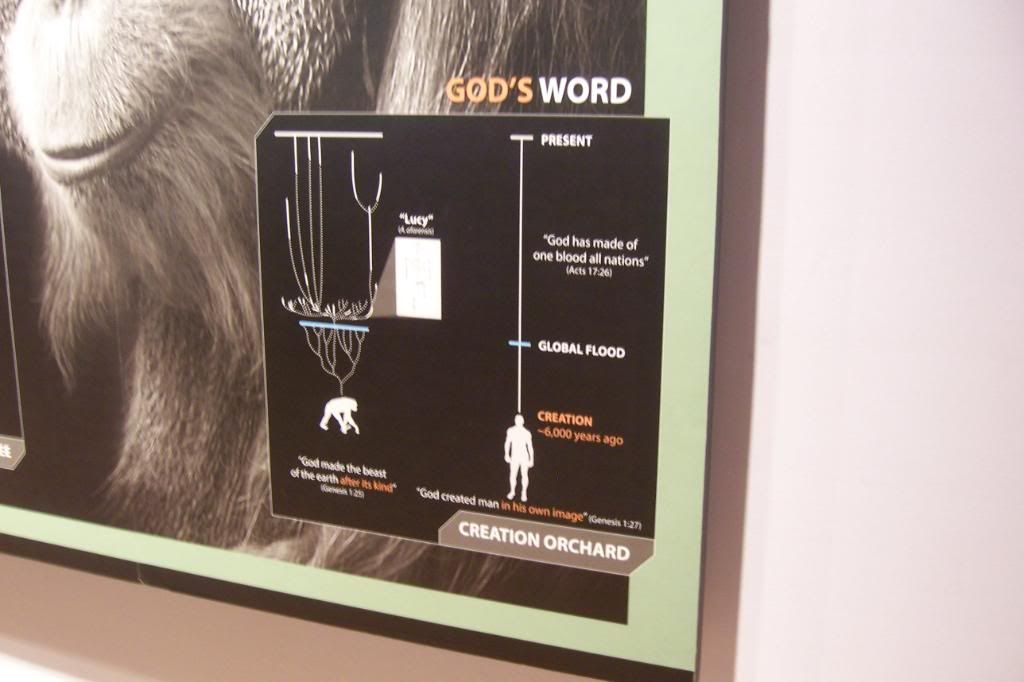
I was impressed in this display on the Human reason side that they put Lucy close to where she would belong in the actually phylogeny. It is true, the evolution of human beings is not the perfect step after step after step that we wish it was. There were many offshoots that we know ended in extinction, and it is hard to determine just which fossils that have been found are our ancestors. However, we do know that there is a relationship between these fossils, us, and the great apes. I was intrigued by the fact that Lucy was placed after the flood, and not before. I am curious to how Lucy could have become buried in just 4,000 years if there had not been a flood to bury her. Most fossils are described in Flood burials, and that is how they all came to be in the ground in different layers. It seems that this is not the case for Lucy, though no explanation is given as to why she is different. It was also amusing to see that Man has not changed one bit in the last 6,000 years. It is good to know that no matter how we try, evolution will never get the better of us!
Same Rocks……Same Fossils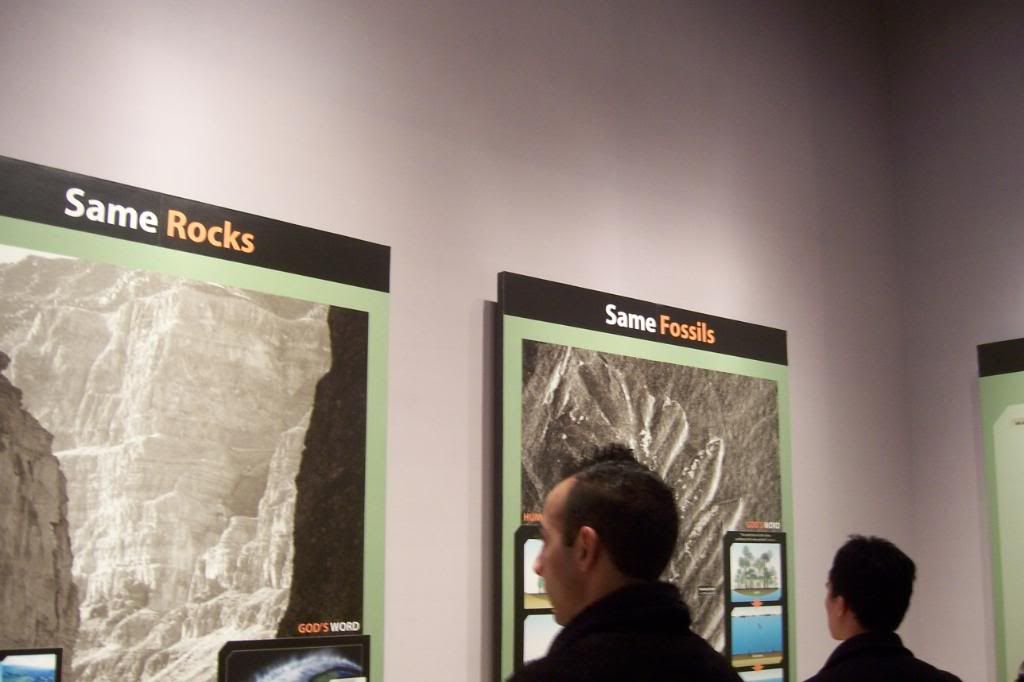
The same rocks and the same fossils can lead scientists to believe that the world is 4.6 billion years old and that strata were laid down over long periods of time and that the fossils within them represent different periods of time in Earth’s grand history and can lead creationists to believe that God’s global flood put down all the layers of sediment simultaneously and the fossils are simply the animals left off the ark. It seems to me that they are not actually looking at the rocks or fossils, or they would have a different view. There is an entire room devoted to these ideas, so I will get into this in more detail later.
Different Views of Time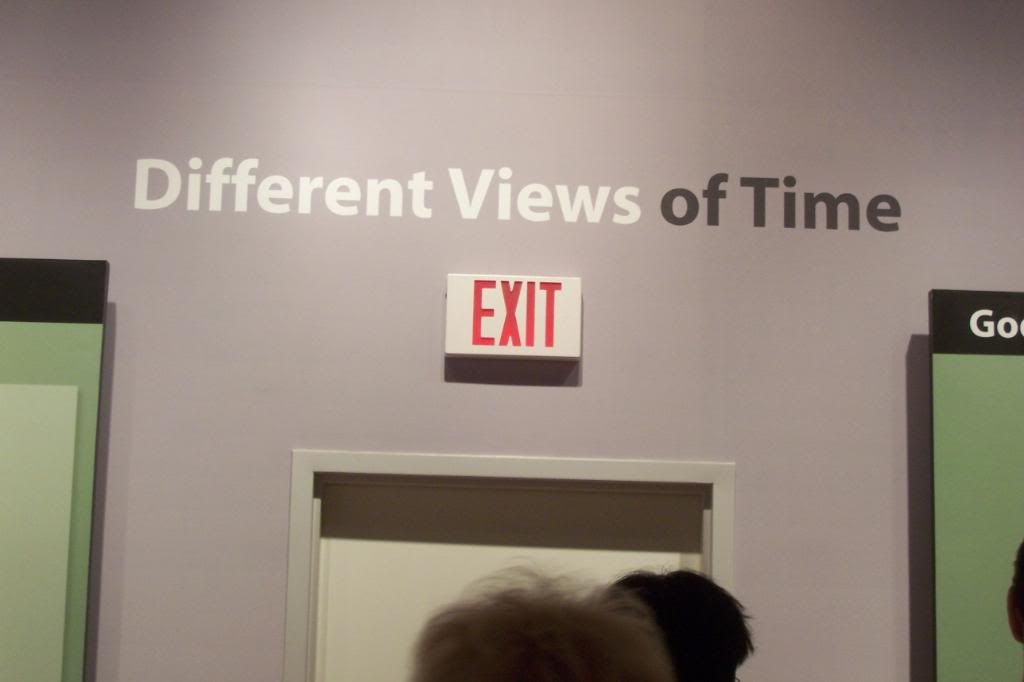
The present is the key to the past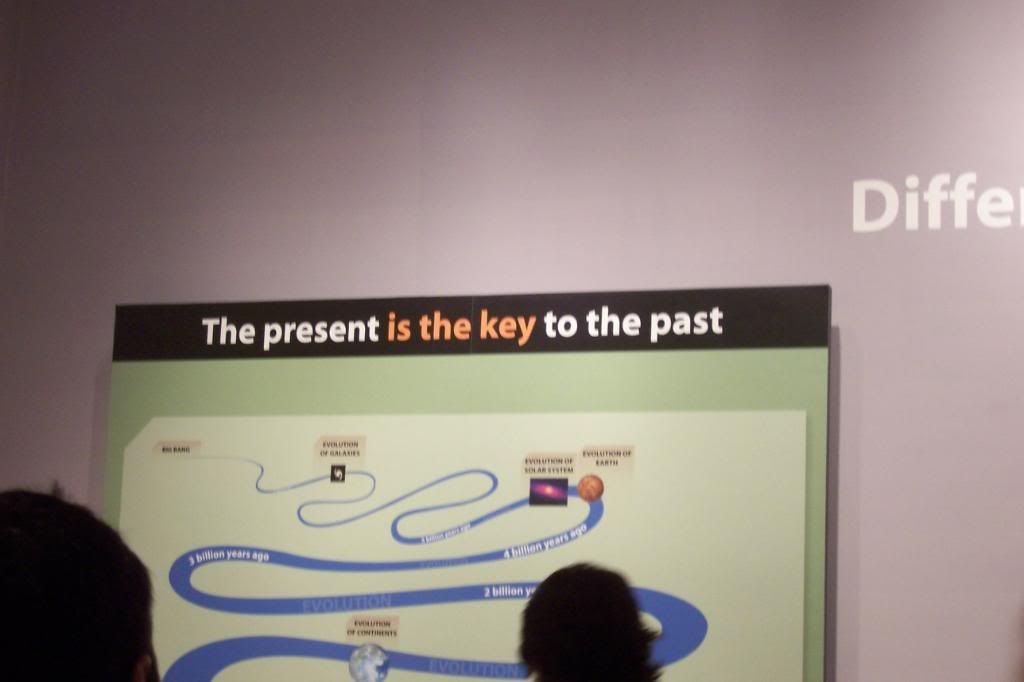
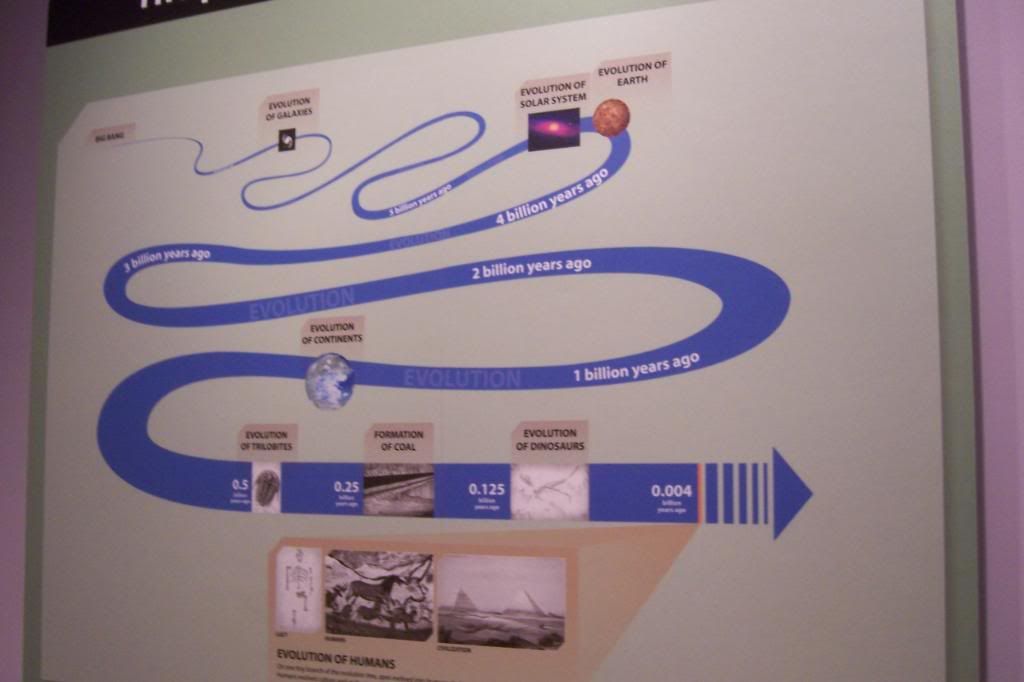
This picture of the evolution of life is close, but not what we teach in evolution or geology classes. First of all, trilobites may have come onto the scene there, but they evolved for much longer after that. Until their demise they were always evolving. This is a misconception of what evolution is, I think. There seems to be this split between something evolving into a “kind” and then variety within a “kind” whereas scientists explain both of these processes in one fell swoop. Formation of coal? WHAT? Coal forms in many different layers from many different times. They are going for the coal deposits of the Carboniferous (which helped to give this time its name), but that is not the only time that coal has been formed.
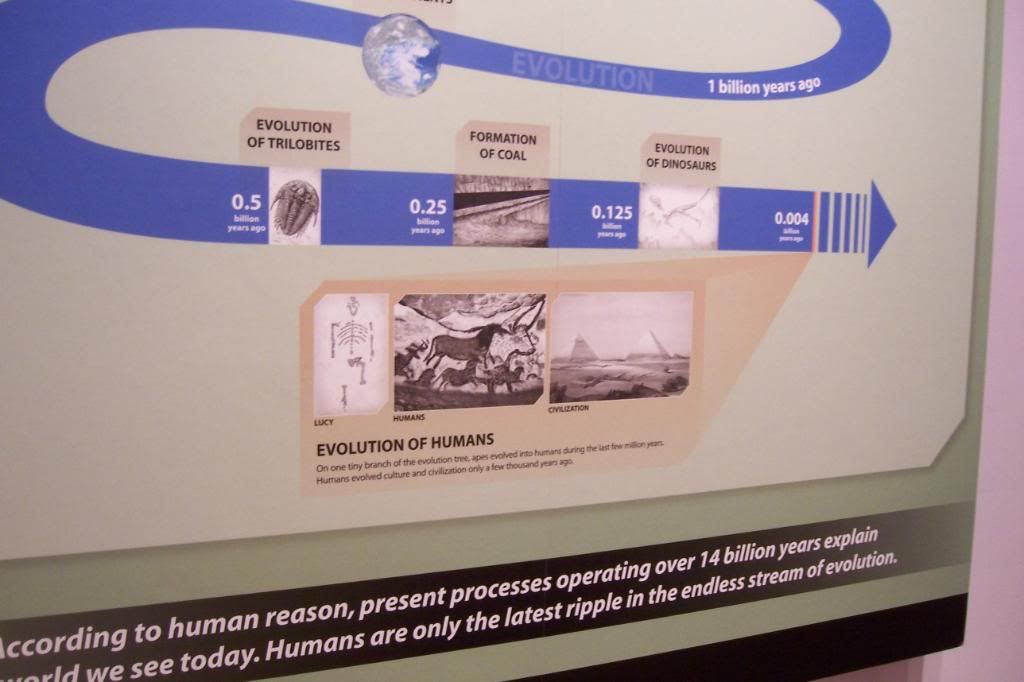
We are not special. This is one of the main problems creationists have with evolution. If we were simply “the latest ripple” then what is the point? There is no love from God for us if we are not made in his image. It would stand to reason then, of course, that God does not love the rest of his creations as much as he loves us. Though this may be incredibly anthropocentric, it is one of the ideas that drives the creationist movement forward. We have to be special, we’re human! We do not belong on a “tiny branch”!
God’s Word is the key to the past, present, and future
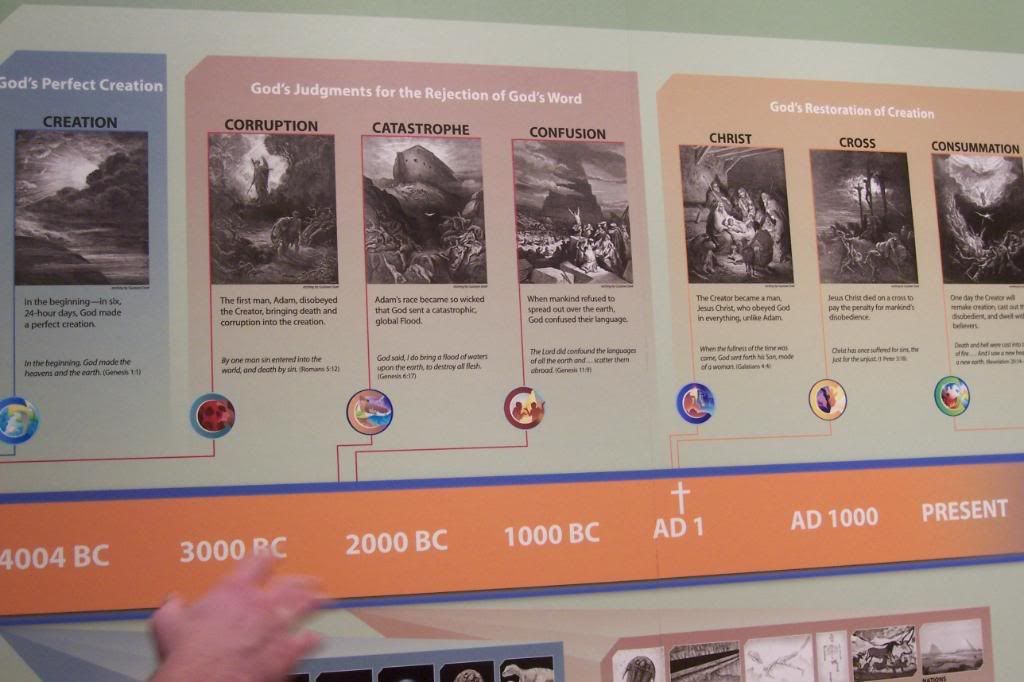
This is a good quick recap of those seven C’s that had been introduced at the beginning of the museum. Each of the parts of this will again be displayed in the museum, and I will go into depth with each in turn, but this is a good basic overview.
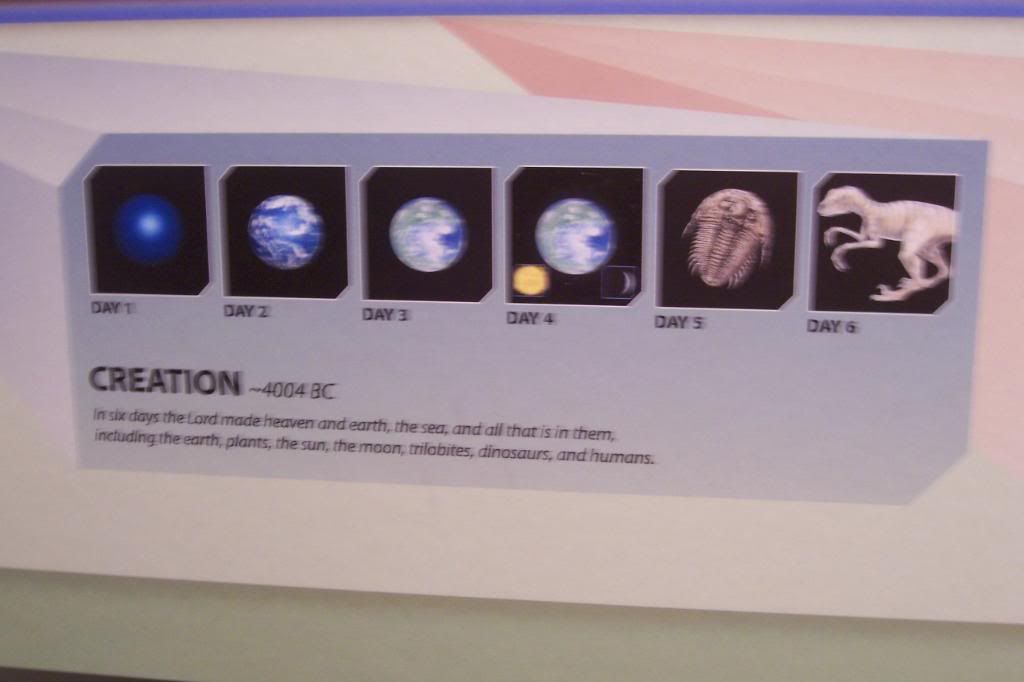
God created everything in six days, according to a literal reading of one of the chapters of Genesis (the other is usually played off as a mistranslation of the original language). We will get a full interpretation of creation later, but with the trilobites and dinosaurs placed thusly on this diagram, it gives you a very good idea of how the creationists try to reconcile direct biblical verse with the evidence that screams “evolution.”
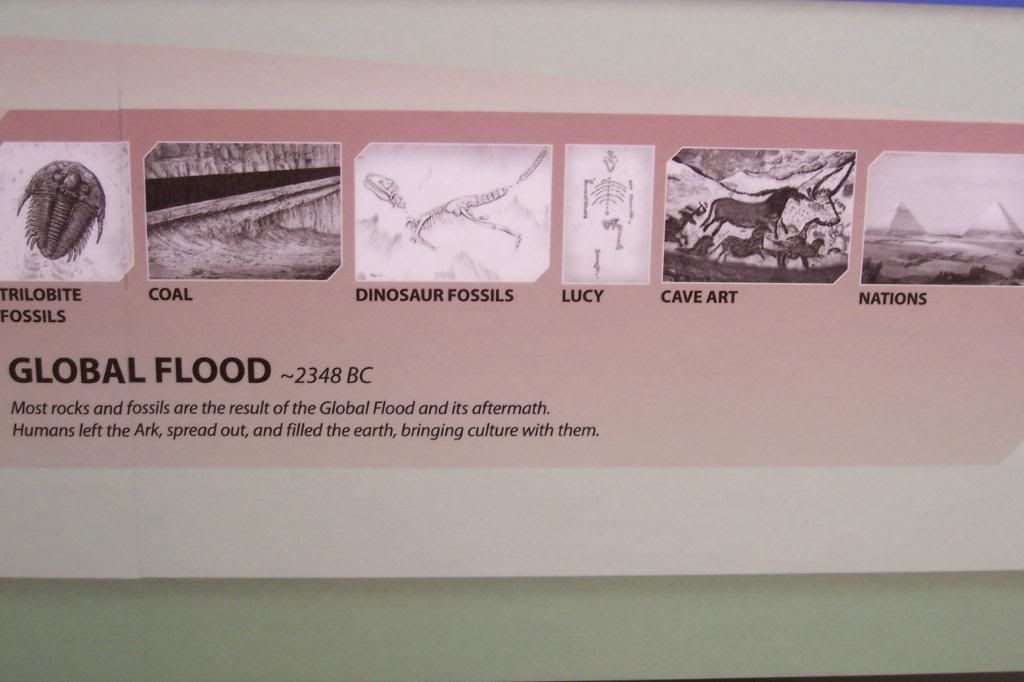
Now this is very interesting. Just a half a room away there is a poster that tells me Lucy lived after the flood. I wonder what could account for this disparity. I wonder which view is correct in this one case of Lucy’s timing in relation to the Flood.
But There’s More! 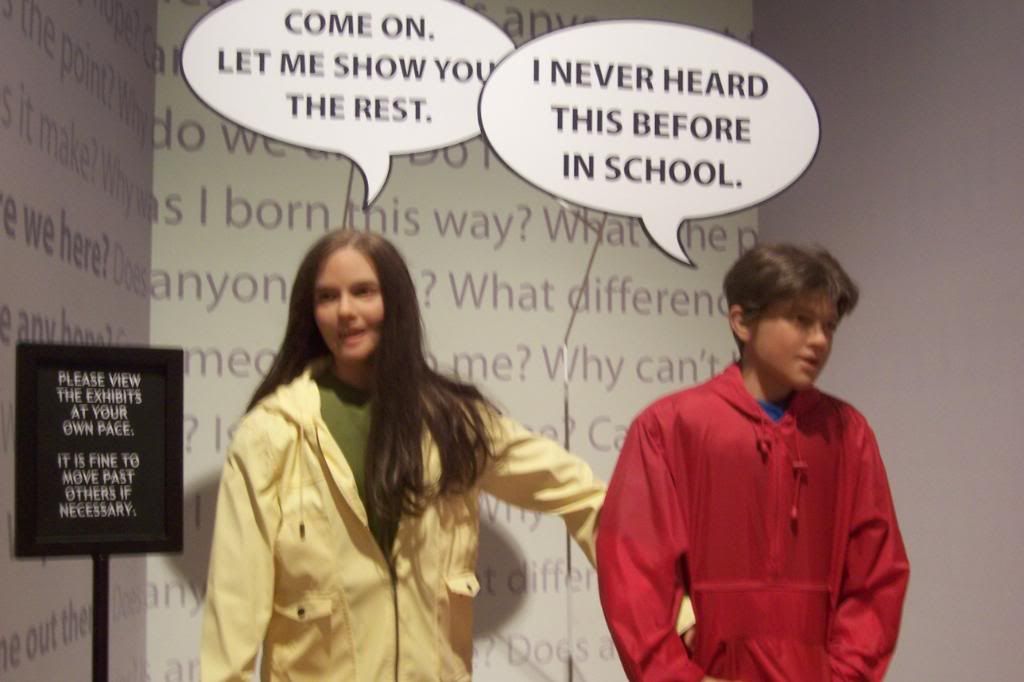
Again the horror of how much this museum is designed for children. Also, the sign basically says “survival of the fastest”.
No comments:
Post a Comment